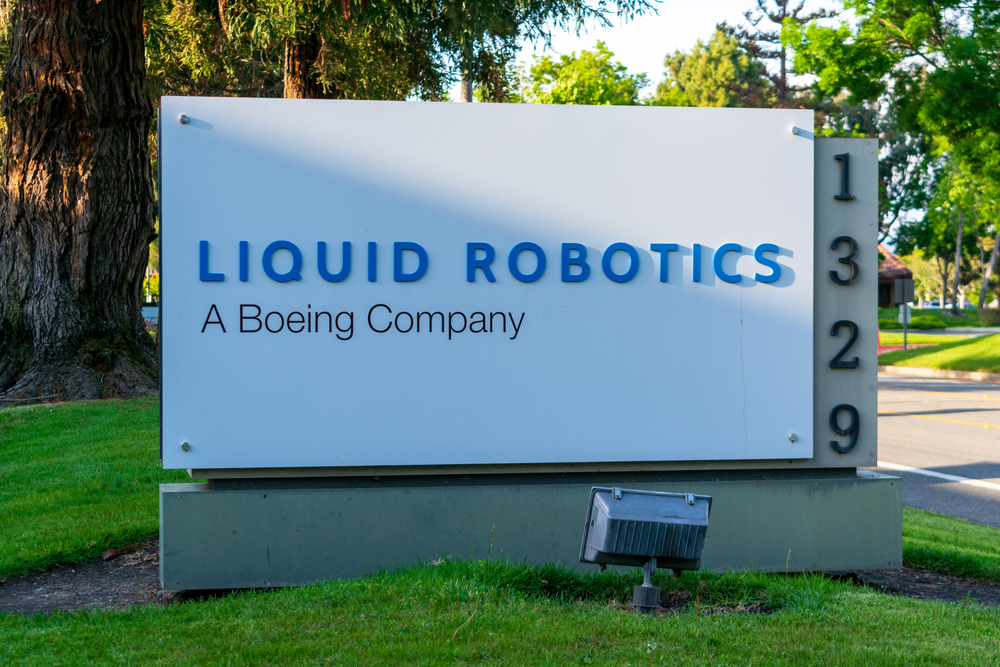The Importance of Signage in Industrial Settings
In industrial complexes, effective signage is crucial for maintaining a safe and efficient working environment. Proper signage helps employees and visitors navigate large facilities, ensures compliance with safety regulations, and reduces the risk of accidents. In an industrial setting, clear and visible signs are not just a convenience but a necessity to prevent injuries and maintain smooth operations.
Unique Challenges in the Mid-Atlantic Industrial Landscape
The Mid-Atlantic region, with its diverse industrial activities and varying weather conditions, presents unique challenges for signage. From the bustling ports of Baltimore to the manufacturing hubs in Pennsylvania, industrial complexes must contend with harsh winters, humid summers, and heavy traffic. These factors necessitate robust, durable signage solutions that can withstand the elements and remain visible in all conditions.
Key Takeaways
- Effective Signage: Crucial for enhancing navigation, safety, and operational efficiency in industrial complexes.
- Comprehensive Systems: Utilize entrance/exit, directional, and color-coded signage for large-scale facilities.
- Safety First: Implement OSHA-compliant, emergency, and hazard warning signs to ensure a safe working environment.
- High-Visibility Solutions: Use illuminated, reflective, and digital signage for 24/7 operations.
- Durability: Choose weather-resistant, chemical/corrosion-resistant, and impact-resistant materials.
- Customization: Balance corporate branding with safety requirements for a cohesive look across facilities.
- Compliance: Meet state-specific, ADA, and industry-specific regulations.
- Innovative Technologies: Integrate IoT, sustainable options, and predictive maintenance for modern signage solutions.
- Partner with Tupp Signs: Benefit from expertise, custom design, and comprehensive project management.
Comparison Table: Traditional vs. Digital Signage for Industrial Complexes
Feature |
Traditional Signage |
Digital Signage |
|---|---|---|
Initial Cost |
Lower | Higher |
Content Flexibility |
Limited, requires manual updates | High, allows real-time changes |
Visibility |
Good, static | Excellent, dynamic and eye-catching |
Energy Consumption |
Lower | Higher, but more efficient with LED technology |
Maintenance |
Periodic cleaning and repairs | Regular software updates and technical maintenance |
Customization |
Limited to initial design | High, customizable content and interactive elements |
Engagement |
Lower | Higher, with dynamic and interactive features |
Sustainability |
Depends on materials used | Can be enhanced with eco-friendly technologies |
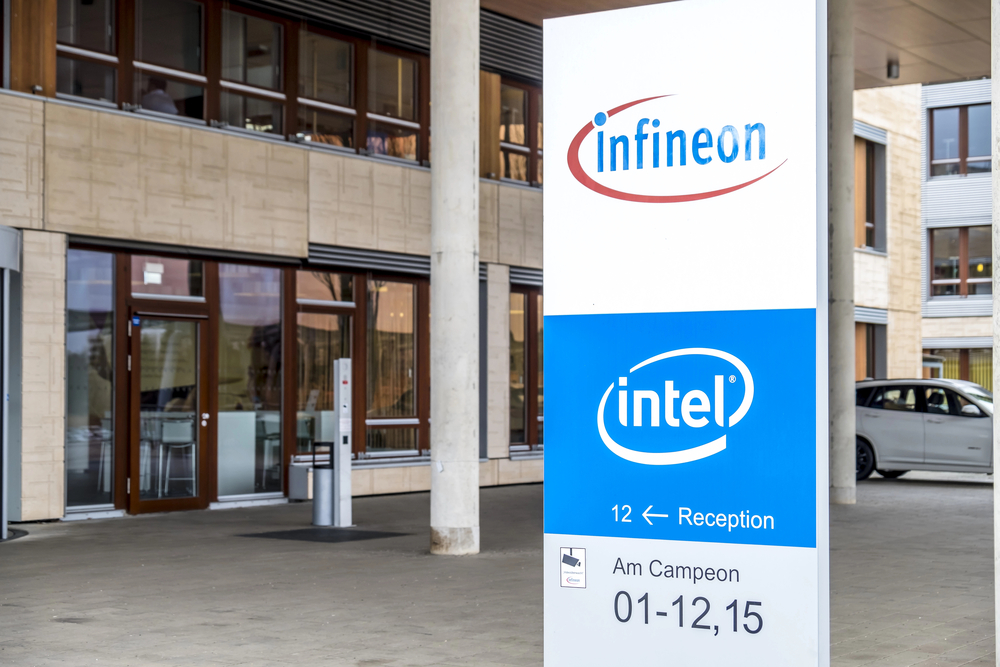
Comprehensive Wayfinding Systems
Entrance and Exit Signage Strategies
Effective entrance and exit signage is critical for guiding vehicles and pedestrians safely in and out of industrial complexes. Clear, prominent signs at all entry and exit points help manage traffic flow, reduce congestion, and prevent accidents. Utilizing large, high-contrast fonts and symbols ensures that the signage is easily readable from a distance, even in low-visibility conditions.
Directional Signage for Large-Scale Facilities
Large industrial facilities require comprehensive directional signage to assist with navigation. This includes signs for different departments, loading docks, parking areas, and restrooms. Implementing a cohesive wayfinding system with consistent design elements and logical placement helps employees and visitors find their way quickly and efficiently, reducing downtime and improving productivity.
Color-Coding Techniques for Different Areas or Departments
Color-coding is an effective technique for enhancing the clarity and efficiency of wayfinding systems in industrial complexes. Assigning specific colors to different departments or areas helps individuals quickly identify their location and destination. For example, blue signs might indicate administrative areas, while red signs highlight hazardous zones. This visual differentiation supports better navigation and safety compliance.
Safety-First Signage Approach
OSHA-Compliant Safety Signs and Their Implementation
Ensuring that all safety signage complies with Occupational Safety and Health Administration (OSHA) standards is essential for industrial complexes. OSHA-compliant signs provide clear, standardized warnings and instructions to prevent workplace accidents and injuries. Implementing these signs in strategic locations, such as near machinery, chemical storage areas, and high-traffic zones, ensures that safety information is always visible and accessible.
Emergency Exit and Evacuation Route Signage
In the event of an emergency, clear and well-placed exit and evacuation route signage can save lives. These signs should be prominently displayed and illuminated to ensure visibility, even during power outages. Regularly updating and maintaining these signs to reflect any changes in the facility layout is crucial for ensuring that evacuation procedures are effective and efficient.
Hazard Warning Signs and Symbols
Hazard warning signs are vital for alerting workers and visitors to potential dangers within the industrial complex. These signs use standardized symbols and colors to convey information quickly and effectively. Examples include biohazard signs, flammable materials warnings, and electrical hazard indicators. Ensuring that these signs are placed in appropriate locations and are easily visible helps prevent accidents and promotes a safer working environment.
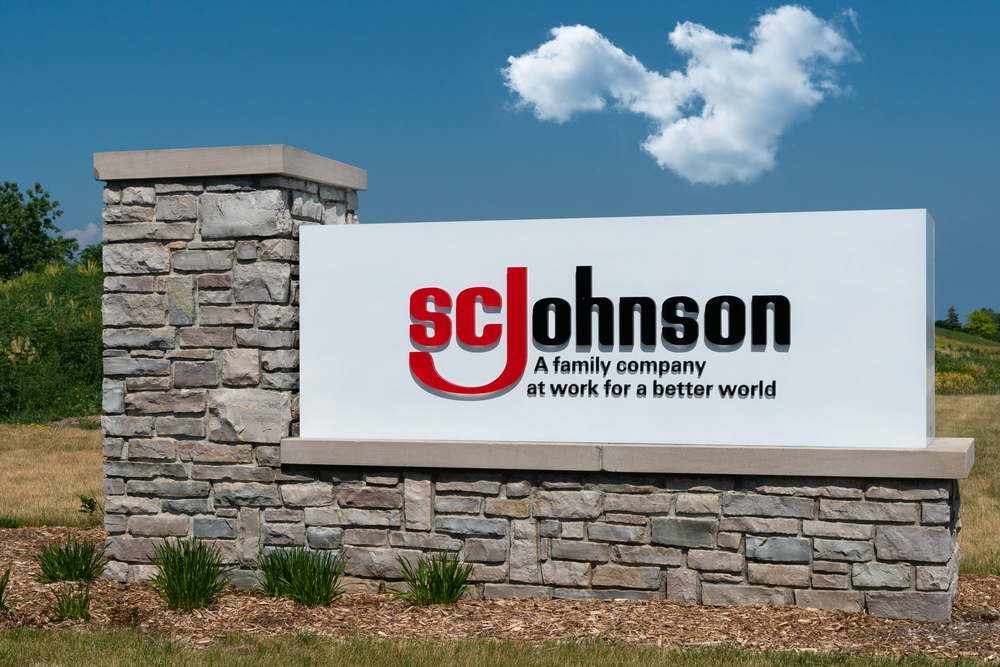
High-Visibility Solutions for 24/7 Operations
Illuminated Signage Options for Low-Light Conditions
For industrial complexes that operate around the clock, illuminated signage is essential for maintaining visibility in low-light conditions. LED and backlit signs provide bright, clear guidance, enhancing safety and navigation during night shifts or in poorly lit areas. These signs are energy-efficient and long-lasting, making them a cost-effective solution for continuous operation.
Reflective Materials for Outdoor Signage
Outdoor signs in industrial complexes must withstand harsh weather conditions while remaining highly visible. Using reflective materials ensures that these signs are easily seen in low-light or adverse weather conditions. Reflective signs are particularly effective for traffic signs, entrance and exit markers, and hazard warnings, providing enhanced visibility and safety.
Digital Displays for Real-Time Information and Alerts
Digital displays offer a dynamic solution for conveying real-time information and alerts in industrial settings. These displays can be used to broadcast important announcements, safety updates, and emergency alerts. The ability to update content instantly ensures that all personnel are informed of current conditions and any potential hazards, improving overall safety and communication within the complex.
Durable Signage for Harsh Industrial Environments
Weather-Resistant Materials for Outdoor Use
Signage in industrial complexes must be built to endure harsh weather conditions, including rain, snow, and extreme temperatures. Materials like high-grade aluminum, stainless steel, and treated wood can withstand these elements, ensuring that signs remain intact and legible over time.
Chemical and Corrosion-Resistant Signage Options
In environments where exposure to chemicals and corrosive substances is common, using signage made from corrosion-resistant materials such as PVC, fiberglass, and certain metals with protective coatings is crucial. These materials resist degradation, maintaining the integrity and readability of the signs.
Impact-Resistant Signs for High-Traffic Areas
High-traffic areas in industrial settings often face physical impacts from equipment and vehicles. Utilizing impact-resistant materials like polycarbonate and reinforced plastics ensures that signs remain durable and functional despite frequent contact.
Customized Branding in Industrial Signage
Incorporating Company Logos and Colors Effectively
Custom signage that incorporates a company’s logo and colors reinforces brand identity while maintaining professionalism. These elements should be integrated into the design without compromising readability or safety information.
Balancing Corporate Identity with Safety Requirements
While branding is important, it should not overshadow essential safety information. Signs should maintain a balance between corporate identity and clear, compliant safety messaging to ensure both brand recognition and adherence to regulations.
Creating a Cohesive Look Across Multiple Facilities
For companies operating multiple facilities, consistency in signage design helps create a unified brand image. Using standardized designs, materials, and color schemes across all locations ensures that the signage looks cohesive and professional, enhancing overall brand integrity.
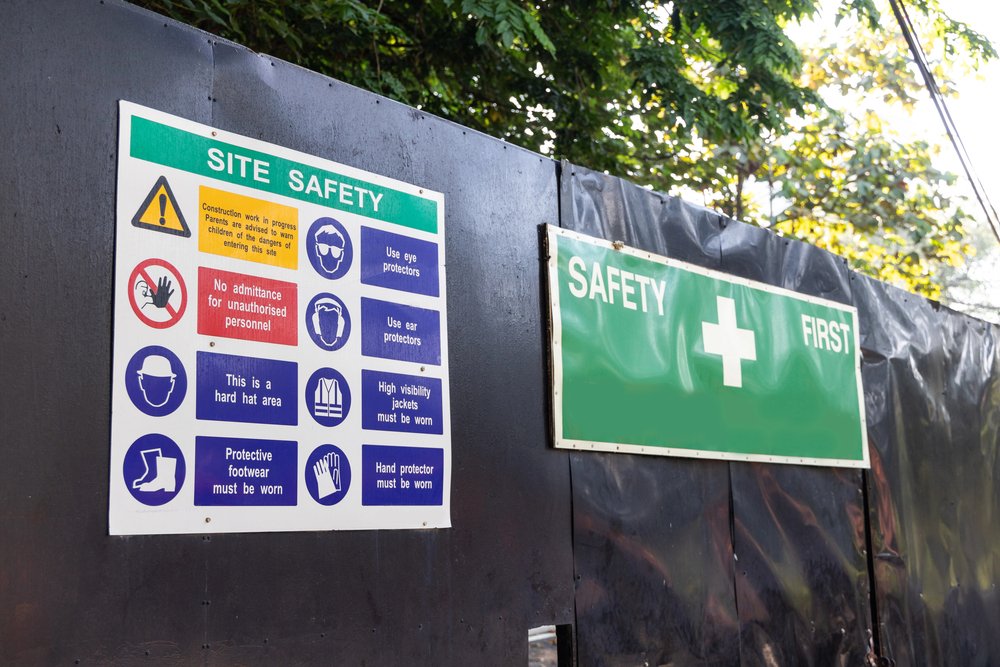
Regulatory Compliance and Industry Standards
Meeting State-Specific Regulations in DE, NJ, PA, NY, and VA
Each state has specific regulations regarding signage in industrial complexes. Ensuring compliance with these regulations is crucial to avoid fines and ensure safety. This includes understanding and implementing state-specific requirements for sign placement, materials, and content.
ADA Compliance in Industrial Settings
The Americans with Disabilities Act (ADA) requires that signage be accessible to individuals with disabilities. This includes considerations like tactile elements, appropriate text size, and contrast ratios to ensure readability for all individuals.
Industry-Specific Signage Requirements (e.g., Chemical, Manufacturing)
Different industries have unique signage requirements. For example, chemical plants may need specific hazard warnings, while manufacturing facilities might require machine operation instructions. Ensuring compliance with these industry-specific standards is essential for maintaining safety and operational efficiency.
Innovative Technologies in Industrial Signage
QR Codes for Accessing Detailed Information or Instructions
Integrating QR codes into signage allows workers to quickly access detailed information or instructions via their smartphones. This can include safety manuals, operation guides, and emergency procedures, enhancing the accessibility of important information.
Augmented Reality Integration for Enhanced Navigation
Augmented reality (AR) can be used to enhance navigation within industrial complexes. AR applications can provide real-time guidance and information overlays when viewed through a smartphone or AR glasses, improving efficiency and reducing navigation errors.
Smart Signage Systems for Real-Time Updates and Monitoring
Smart signage systems connected to a central network can display real-time updates and monitor environmental conditions. These systems can alert workers to changes in safety protocols, operational statuses, and other critical information, ensuring that everyone is informed and safe.
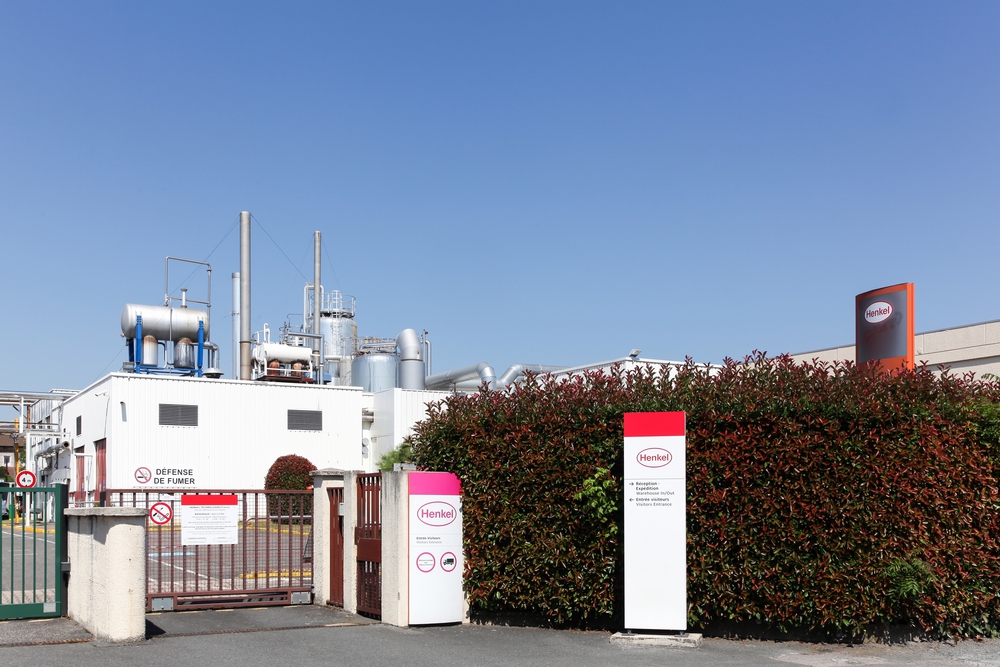
Multilingual Signage Solutions
Addressing Diverse Workforce Needs in the Mid-Atlantic Region
The Mid-Atlantic region boasts a diverse workforce, with employees hailing from various cultural and linguistic backgrounds. Industrial complexes must accommodate this diversity to ensure effective communication and safety. Multilingual signage helps bridge language gaps, making it easier for all employees to understand important information and navigate the facility safely.
Effective Use of Universal Symbols and Pictograms
Universal symbols and pictograms are essential in creating signage that transcends language barriers. These visual elements are easily recognizable and convey critical information quickly and clearly. For example, symbols for fire exits, hazardous materials, and first aid are universally understood, making them indispensable in multilingual signage strategies.
Strategies for Clear Communication Across Language Barriers
To ensure clear communication across language barriers, industrial complexes can implement the following strategies:
- Bilingual Signs: Use signs that display information in both English and the most common languages spoken by the workforce.
- Pictograms: Incorporate universally recognized symbols alongside text to reinforce the message.
- Training and Education: Provide training sessions to help employees understand the signage and its significance.
- Feedback Loop: Regularly gather feedback from employees to identify areas where signage can be improved for better comprehension.
Cost-Effective Signage Strategies for Large-Scale Complexes
Modular Signage Systems for Easy Updates and Modifications
Modular signage systems are a cost-effective solution for large-scale industrial complexes. These systems allow for easy updates and modifications without the need to replace the entire sign. By using interchangeable panels, facilities can quickly adapt signage to reflect changes in operations, regulations, or tenant information, reducing long-term costs.
Bulk Production Benefits for Multi-Site Operations
Industrial complexes with multiple sites can benefit from bulk production of signage. Ordering signs in bulk reduces unit costs and ensures consistency across all locations. Standardizing signage design and production processes also simplifies maintenance and updates, further driving down costs and ensuring a uniform brand image.
Long-Term ROI Analysis of Quality Signage Investments
Investing in high-quality signage offers significant long-term returns. Durable materials and advanced technologies reduce the need for frequent replacements, lowering maintenance costs. Additionally, effective signage enhances safety and efficiency, leading to fewer accidents and operational disruptions. A thorough ROI analysis can help industrial complexes understand the financial benefits of investing in quality signage solutions.
Maintenance and Upkeep of Industrial Signage
Regular Inspection and Cleaning Protocols
Regular inspection and cleaning protocols are essential to maintain the effectiveness and appearance of industrial signage. Inspections should check for damage, fading, or obstructions, while cleaning ensures that signs remain visible and legible. Establishing a routine schedule helps prevent minor issues from becoming major problems.
Replacement Strategies for Worn or Outdated Signs
Over time, signs can become worn or outdated due to environmental factors or changes in regulations. Developing a proactive replacement strategy ensures that signage remains current and effective. This strategy should include periodic reviews, budgeting for replacements, and prioritizing critical signs that impact safety and navigation.
Adapting Signage to Evolving Facility Needs
As industrial complexes grow and evolve, their signage needs may change. Regularly assessing the facility’s layout, operations, and workforce can identify areas where signage needs updating or expansion. Adapting signage to reflect these changes ensures ongoing effectiveness and supports the facility’s operational goals.
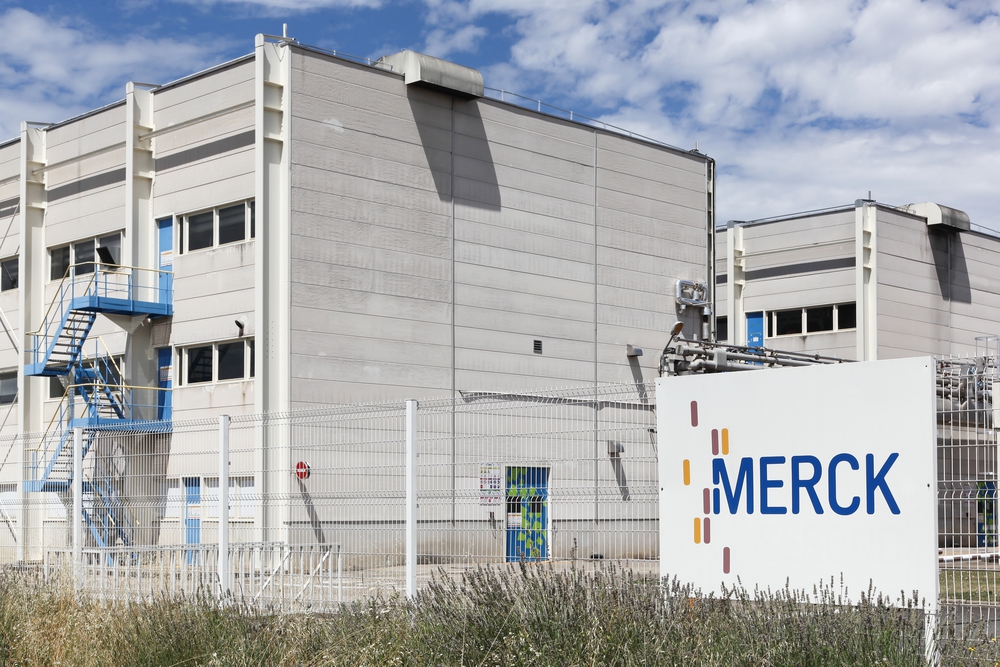
Partnering with Tupp Signs for Industrial Signage Solutions
Our Expertise in Serving DE, NJ, PA, NY, and VA Industries
Tupp Signs has a long history of providing top-tier signage solutions for industries across Delaware, New Jersey, Pennsylvania, New York, and Virginia. Our deep understanding of the unique challenges and regulatory requirements in these regions allows us to create signage that is not only compliant but also highly effective. Whether dealing with the harsh winters of Pennsylvania or the bustling industrial zones of New Jersey, we have the experience and expertise to deliver tailored signage solutions that meet the specific needs of each location.
Custom Design and Manufacturing Capabilities
At Tupp Signs, we pride ourselves on our ability to offer custom design and manufacturing capabilities. Our team of designers works closely with clients to create signage that reflects their brand identity while meeting all functional requirements. Using state-of-the-art manufacturing processes, we ensure that each sign is crafted to the highest standards of quality and durability. From concept to final product, our custom signs are designed to withstand the demands of industrial environments and provide long-lasting performance.
Comprehensive Project Management from Concept to Installation
We offer comprehensive project management services that guide clients through every step of the signage process, from initial concept to final installation. Our team handles all aspects of the project, including site surveys, design, permitting, manufacturing, and installation. This end-to-end service ensures that projects are completed on time, within budget, and to the client’s exact specifications. By managing the entire process, we ensure seamless execution and high-quality results, allowing our clients to focus on their core operations.
Future Trends in Industrial Signage
Integration with IoT and Smart Factory Systems
The integration of signage with Internet of Things (IoT) and smart factory systems represents a significant trend in the future of industrial signage. Smart signs connected to factory networks can display real-time data, alerts, and operational updates, enhancing efficiency and safety. These systems can provide actionable insights and automated responses to changing conditions, making them an invaluable tool for modern industrial facilities.
Sustainable and Eco-Friendly Signage Options
As sustainability becomes increasingly important, eco-friendly signage options are gaining traction in the industrial sector. Utilizing recycled materials, energy-efficient lighting, and environmentally friendly manufacturing processes, these signs help reduce the environmental impact of industrial operations. Sustainable signage not only aligns with corporate social responsibility goals but also appeals to eco-conscious clients and stakeholders.
Predictive Maintenance Using Data-Driven Signage Systems
Predictive maintenance is another emerging trend, driven by data-driven signage systems. These systems can monitor the condition of signage and predict when maintenance is needed, preventing failures and extending the lifespan of the signs. By using sensors and analytics, facilities can optimize maintenance schedules, reduce costs, and ensure that signage remains effective and safe at all times.
Conclusion
Recap of Key Benefits of Effective Industrial Signage
Effective signage in industrial complexes is crucial for enhancing navigation, safety, and operational efficiency. By implementing comprehensive wayfinding systems, prioritizing safety-first signage, utilizing high-visibility solutions, and embracing innovative technologies, industrial facilities can create a safer, more efficient environment for employees and visitors. Durable, customizable, and compliant signage solutions ensure long-term benefits and support the facility’s operational goals.
Call-to-Action for Industrial Facility Managers to Assess Their Signage Needs
Industrial facility managers are encouraged to assess their current signage needs and consider upgrades or enhancements to improve safety and efficiency. Partnering with an experienced signage provider like Tupp Signs can ensure that the signage solutions are tailored to meet the specific requirements of the facility and region. Contact Tupp Signs today to start planning your signage project and take the first step towards creating a safer, more navigable industrial complex.
By focusing on these key elements and future trends, industrial complexes can stay ahead of the curve and ensure that their signage solutions continue to meet the evolving needs of their operations. Investing in high-quality, effective signage is a strategic move that enhances both safety and productivity, leading to long-term success.


